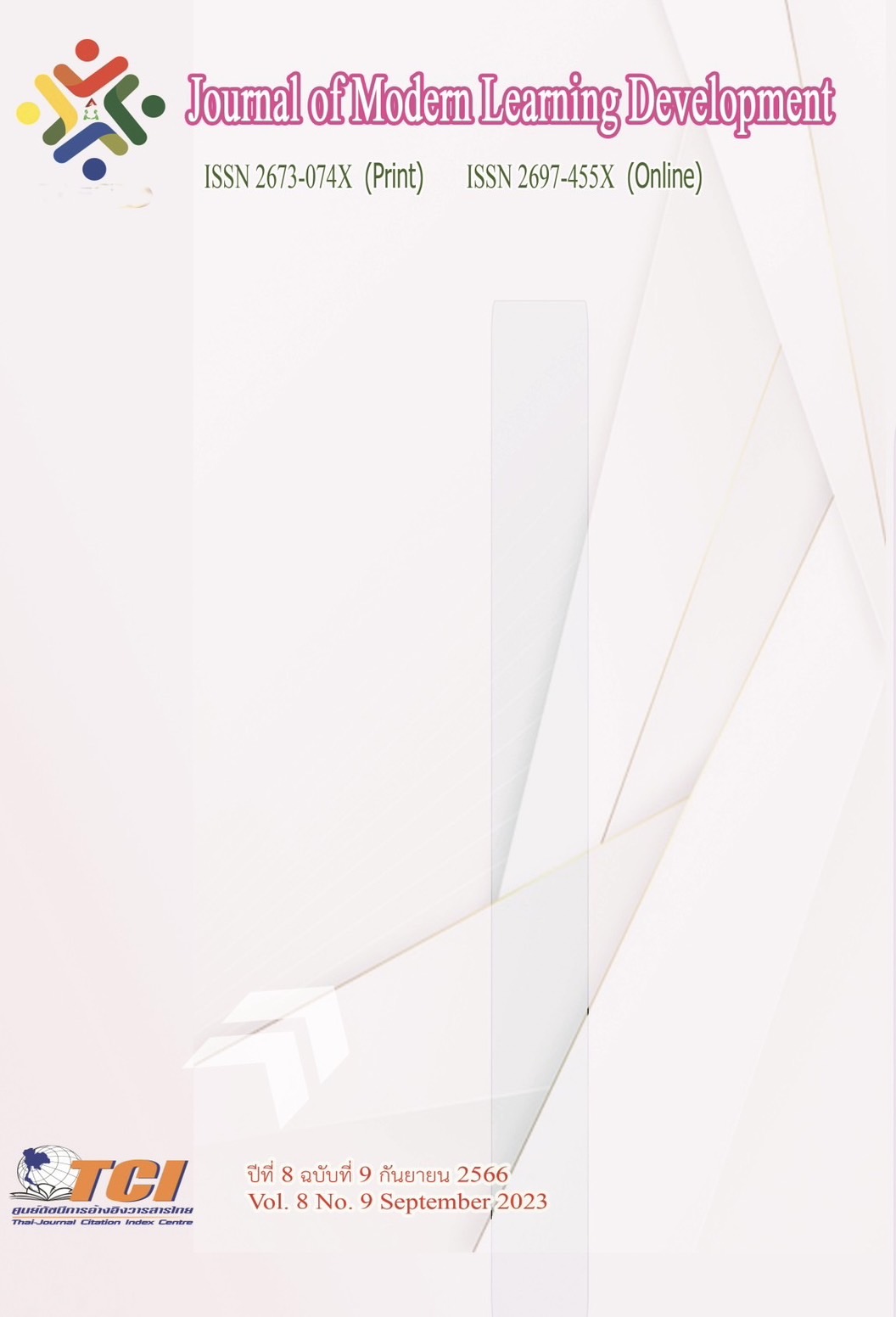Development of an Instructional Model by Applying Blameless Postmortem Methods to Enhance Critical Reading Skills and Creative Problem Solving Skills of Undergraduate Students
Main Article Content
Abstract
The purposes of this research were to: (1) develop and determine the efficiency of an instructional model by applying the blameless postmortem methods to enhance critical reading skills and creative problem solving skills of undergraduate students (2) evaluate the effectiveness of an instructional model by applying the blameless postmortem methods to enhance critical reading skills and creative problem solving skills of undergraduate students and (3) disseminate an instructional model by applying the blameless postmortem methods to enhance critical reading skills and creative problem solving skills of undergraduate students. The samples of this research were 27 undergraduate students in the third year of Thai Language major, Faculty of Education, Silpakorn University, the target population consisted of 35 undergraduate students in the second year of Thai Language major, Bansomdejchaopraya Rajabhat University.The research instruments employed in this research were an instruction model, a manual, lesson plans, critical reading skills and creative problem solving skills tests and an opinion of this instructional model. The quantitative data were analyzed by mean (M), standard deviation (SD), and t – test dependent, repeated-measure analysis of variance. The qualitative data were analyzed by content analysis.
The following were the results: 1. The Instruction model by applying Blameless Postmortem Methods to Enhance Critical Reading Skills and Creative Problem Solving Skills of Undergraduate Students consisted of 4 components; principles, objectives, process and measurement and evaluation.The teaching and learning process has 6 steps as follows: 1) Prerequisite 2) Proof of evidence 3) Proof of concept 4) Report 5) Lessons learned
6) Encouragement novel viewpoints
2. The effectiveness of the model indicated that 2.1) the undergraduate students’ critical reading skills after implementing the model were higher than before attending to the class at a 0.05 significance level, 2.2) after implementing the model, the undergraduate students’ critical reading skills were continually higher, each measurement was statistically different at the 0.05 level for all pairs (p=.000), 2.3) the undergraduate students’ creative problem solving skills after implementing the model were higher than before attending to the class at a 0.05 significance level, 2.4) after implementing the model, the undergraduate students’ creative problem solving skills were continually higher, each measurement was statistically different at the 0.05 level for all pairs (p=.000-.003), 2.5) the students’ opinions of the model were in the level of strongly.
3. The effectiveness of disseminating the instructional model revealed that 3.1) the undergraduate students’ critical reading skills after implementing the model were higher than before attending to the class at a 0.05 significance level, 3.2) after implementing the model, the undergraduate students’ critical reading skills were continually higher, each measurement was statistically different at the 0.05 level for all pairs (p=.000), 3.3) the undergraduate students’ creative problem solving skills after implementing the model were higher than before attending to the class at a 0.05 significance level, 3.4) after implementing the model, the undergraduate students’ creative problem solving skills were continually higher, each measurement was statistically different at the 0.05 level for all pairs (p=.000), 3.5) the students’ opinions of the model were in the level of strongly.
Article Details
References
กุสุมา รักษมณี. (2547). วรรณสารวิจัย. กรุงเทพมหานคร: แม่คำผาง.
บาหยัน อิ่มสำราญ. (2548). วิพากษ์วรรณกรรม. กรุงเทพมหานคร: ตุลารำลึก.
ประจักษ์ น้อยเหนื่อย และมาเรียม นิลพันธุ์. (2564). “การพัฒนารูปแบบการจัดการเรียนรู้วรรณคดีไทยตามแนวคิด Active Learning เพื่อส่งเสริมความสามารถในการแก้ปัญหาเชิงสร้างสรรค์และความซาบซึ้งในวรรณคดีไทยของนักเรียนระดับชั้นมัธยมศึกษาตอนปลาย.” Journal of Research and Curriculum Development. 11 (2), 138 -157.
ภัทราภรณ์ ช้อยหิรัญ. (2563). “การพัฒนารูปแบบการเรียนรู้เพื่อสร้างเสริมความสามารถในการอ่าน ตีความของนักศึกษาระดับปริญญาบัณฑิตโดยใช้ RUCES MODEL. วิทยานิพนธ์ปริญญาปรัชญาดุษฎีบัณฑิต สาขาหลักสูตรและการสอน. บัณฑิตวิทยาลัย: มหาวิทยาลัยศิลปากร.
มาเรียม นิลพันธุ์. (2558). วิธีวิจัยทางการศึกษา. (พิมพ์ครั้งที่ 9). นครปฐม: ศูนย์วิจัยและพัฒนาทางการศึกษา คณะศึกษาศาสตร์ มหาวิทยาลัยศิลปากร.
รื่นฤทัย สัจจพันธุ์. (2549). สุนทรียภาพแห่งชีวิต. กรุงเทพมหานคร: บริษัทอมรินทร์พริ้นติ้งแอนด์พับลิซซิ่ง จำกัด.
สมศักดิ์ เอี่ยมคงสี. (2561). การจัดการห้องเรียนในศตวรรษที่ 21. กรุงเทพมหานคร: ทริปเพิ้ล เอ็ด ดูเคชั่น
สมเสมอ ทักษิณ และคณะ. (2018). “ผลการใช้รูปแบบการเรียนรู้แบบ PACLE เพื่อเสริมสร้าง ความสามารถในการแก้ปัญหาอย่างสร้างสรรค์สำหรับนักเรียนชั้นมัธยมศึกษาปีที่ 1”. Veridian E-Journal, Slipakorn University ฉบับภาษาไทย สาขามนุษยศาสตร์ สังคมศาสตร์ และศิลปะ. 11 (2), 136 – 155.
Allspaw, J. (2012). Blameless PostMortems and a Just Culture. Online. Retrieved March 20, 2022, from https://www. etsy.com.
Main, R.G. (1997). “Intergrating Motivation into the Design Process.” Education Technology 33 (22), 37-41.
Nunnally, J.C. (1978). Psychometric theory. (2nd Edition). New York: McGraw-Hill.


